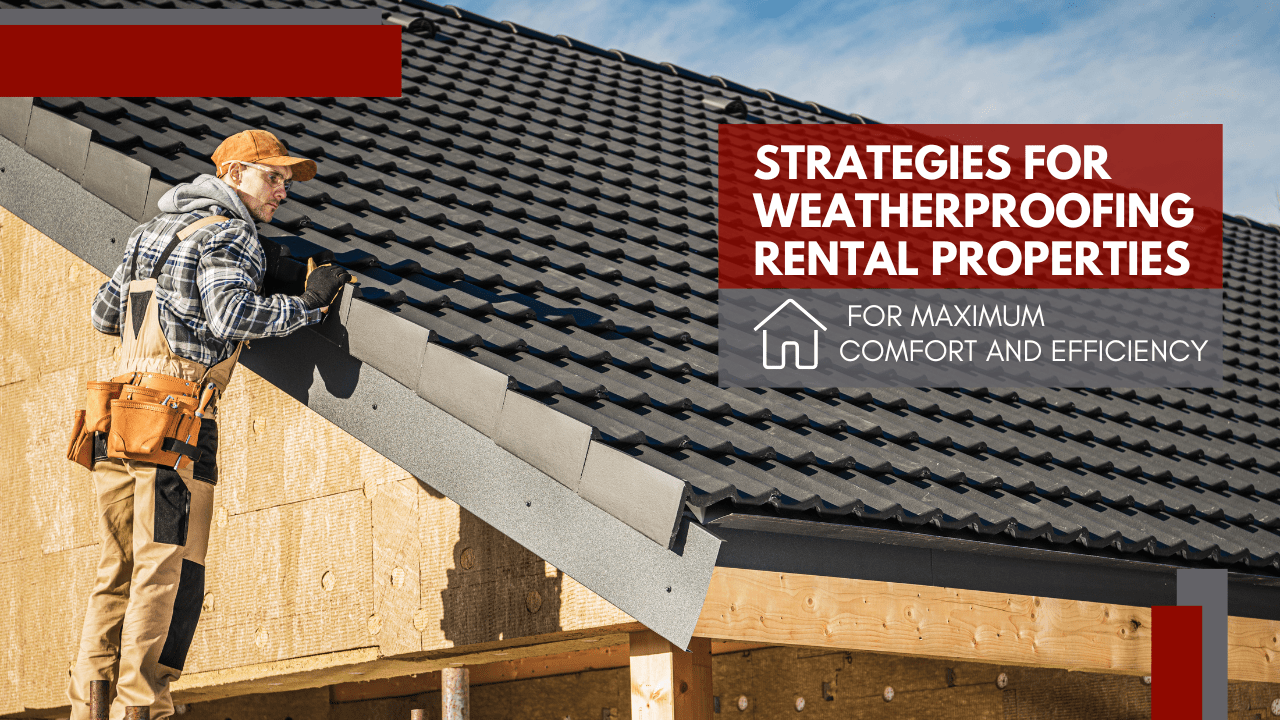
Whether you enjoy the hot sun of a summer day, the warm breezes of spring, or the pumpkin-spiced everything that comes with fall, the weather has a big impact on how we live our lives and rent out our homes. Think about when you’re most likely to have new tenants moving in: it’s not the dead of winter, that’s for sure.
We are talking about the weather today, but not as a consideration when you’re renting out your home. We’re talking about the weather as a maintenance issue. Because the local climate does have an impact on how you protect the condition of your property. Seasonal maintenance will help you preserve the value of your investment home.
Tenants need to be involved, too, as well as your network of vendors, contractors, and service professionals. Who is de-icing the slippery walkways outside of your duplex? Who is mowing the lawn in the summer and shoveling the snow in the winter?
Indianapolis has unpredictable weather. Sometimes, it’s even harsh.
To keep your investment properties comfortable and efficient throughout the seasons, it's crucial to consider strategic weatherproofing measures. You want to keep your tenants comfortable and safe while they’re living in your property. You also want to make sure that your investment is not particularly vulnerable to high heat, freezing rains, snow, and wind.
We manage rental properties in Indianapolis, and one of the things we’re always thinking about is protecting your property from the weather. Today, we want to guide rental property owners through practical steps to protect their investments and ensure tenant satisfaction all year round.
Understanding Indianapolis Climate
Before diving into weatherproofing strategies, it's essential to understand what your rental properties in Indianapolis are up against. If you live in the area, you understand what the local climate is like. But, a lot of our investors are from outside of Indianapolis. We want to make sure you understand what the seasons look like here, and how they impact your property.
Indianapolis experiences a humid continental climate, which includes cold winters, wet springs, hot summers, and mild falls. Preparing for this range of weather means implementing versatile weatherproofing solutions.
Tips for Regular Maintenance
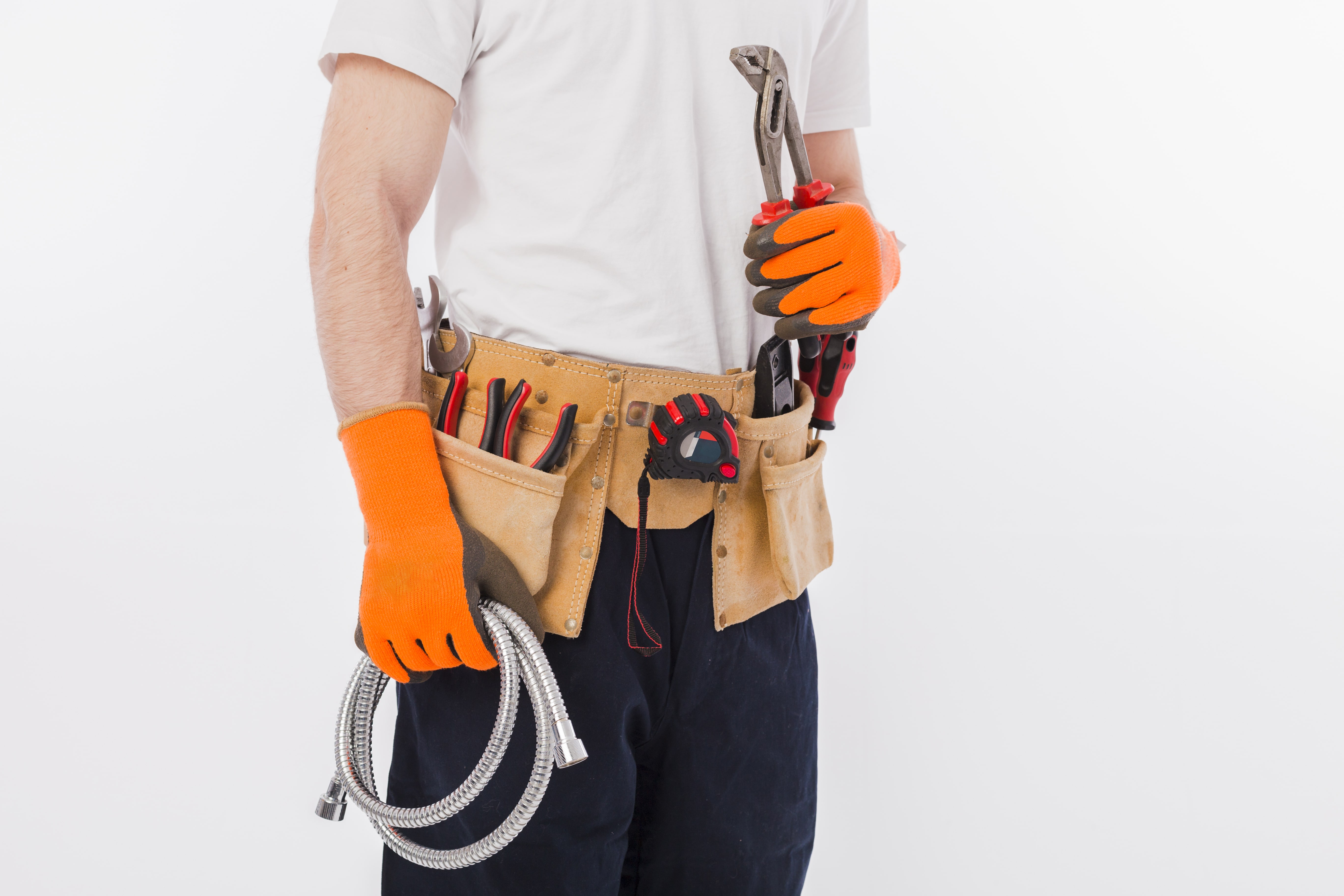 Preventative maintenance is important all year long. You cannot prepare for and withstand the seasons if you are not consistently taking care of your property. Regular maintenance is key to ensuring your weatherproofing efforts remain effective over time. Here are some practical tips for keeping your rental properties in top condition:
Preventative maintenance is important all year long. You cannot prepare for and withstand the seasons if you are not consistently taking care of your property. Regular maintenance is key to ensuring your weatherproofing efforts remain effective over time. Here are some practical tips for keeping your rental properties in top condition:
Inspect and Clean Gutters Regularly The gutters in your rental property help to move rain and melting snow away you’re your home. Ensure that gutters and downspouts are free from debris to prevent water damage to the property’s foundation and landscape. | Service the HVAC System in Each Season Schedule an annual inspection and maintenance of the heating, ventilation, and air conditioning (HVAC) system to ensure it is running efficiently and effectively in all seasons. This will be important no matter what the season. | Continually Inspect Your Rental Property Roof Before and after harsh weather seasons, inspect the roof for any signs of damage or wear that could lead to leaks or heat loss. You want to catch roof problems while they’re still minor, otherwise, you’ll find yourself paying for a new roof sooner than you should. |
Insulation is Key and Avoiding Gaps
Check for and seal any gaps or cracks in the walls, windows, and doors to prevent cold drafts in the winter and keep cool air inside during the summer. Ensure that the property is properly insulated, particularly in the attic and walls, to maintain internal temperatures and reduce energy bills.
By adhering to these maintenance practices, you can enhance the longevity and comfort of your Indianapolis rental properties, leading to happier tenants and lower operational costs.
Tip: Don’t Put Off Upgrading Insulation
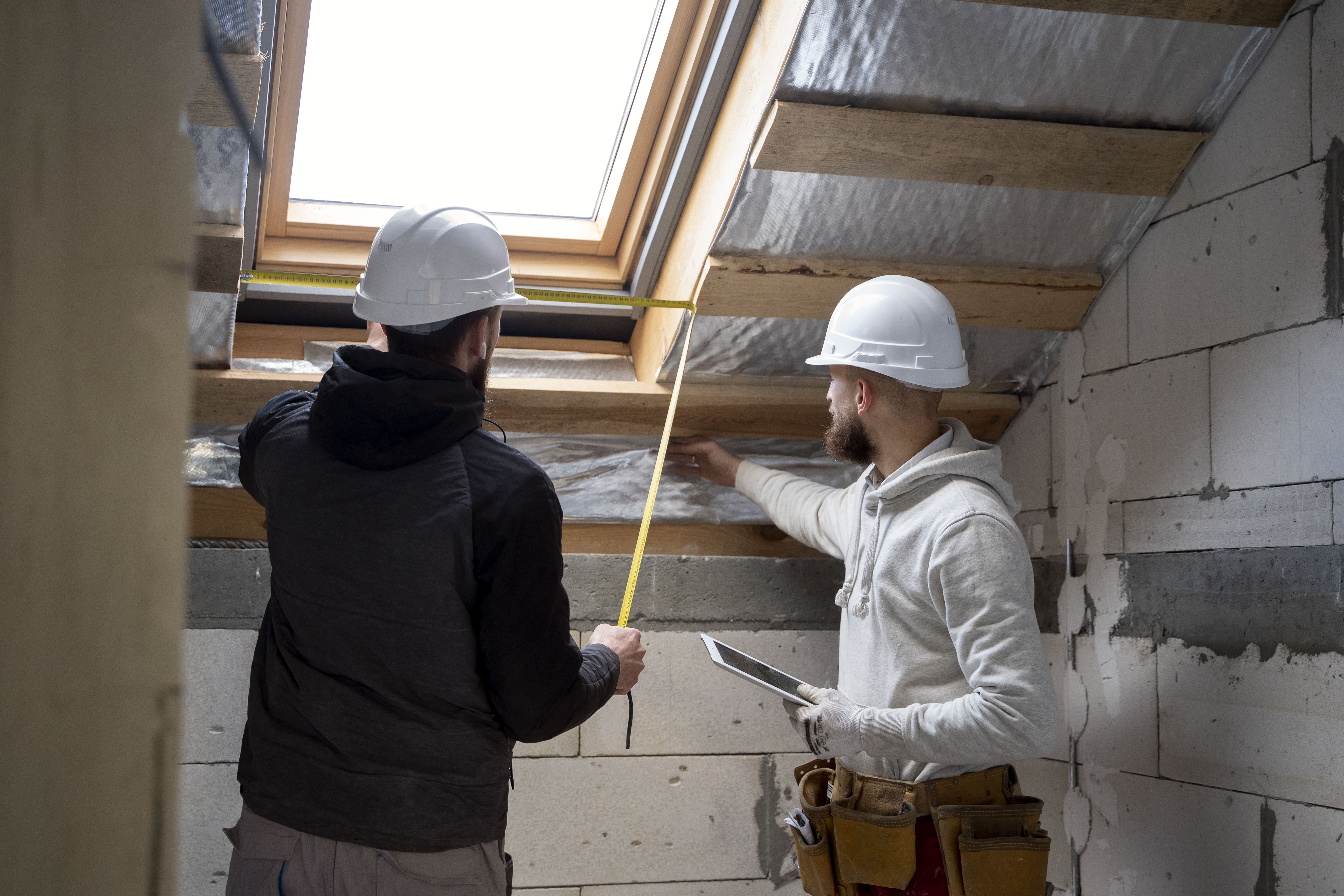
One of the most effective ways to weatherproof a property is by ensuring it is well insulated. As we mentioned already, adequate insulation helps maintain indoor temperatures, reducing the need for excessive heating in the winter and cooling in the summer.
Walls and attics are especially vulnerable to insulation issues.
Attics Heat rises, and without proper attic insulation, it will escape, forcing your heating system to work harder. | Walls Seal any gaps in the walls so you can preserve insulation. This helps keep the interior temperatures stable and is especially necessary for older properties where insulation may have degraded or wasn’t installed effectively. |
Air leaks around doors, windows, and even electrical outlets can be a significant source of energy loss. Here are some ways to tackle them:
Weather-stripping
Apply weather-stripping around movable components, such as windows and doors, to seal gaps.
What kind of weather-stripping is best? It depends.
Choose something that will withstand the friction, outside weather, temperature changes, and any wear and tear that happens inside your rental home. For example, when applied to a door bottom or threshold, you want to make sure your weather-stripping does not drag on the carpet or erode from heavy foot traffic. Weather stripping in a window sash must accommodate the sliding of those window panes when they’re opened and closed. The weather-stripping you choose should seal well when the door or window is closed but allow it to open freely.
Choose a product for each specific location.
Felt and open-cell foams are often affordable, but they’re susceptible to weather and they don’t do a great job of blocking airflow. They’re also easy to see, which may impede the aesthetic appeal of your property.
Vinyl weather-stripping is a bit more expensive but it’s durable. It also resists moisture.
Metal will last for a long time, especially if you choose bronze, copper, stainless steel, or aluminum. Metal weather-stripping materials are usually best in older homes.
Consider cost and durability as well as how the type of stripping you choose may fit into irregular spaces.
Caulking
Caulk is what you need to seal air leaks through cracks, gaps, or joints less than 1-quarter-inch wide between stationary building components and materials.
Most caulking compounds are available in hardware stores, and you’ll find them in disposable cartridges that fit inside of caulking guns. Look for one with an automatic release, which is easier to use. You might also find pressurized cartridges that do not require caulking guns.
The amount of caulk you need depends on how much airflow is leaving your home. The Department of Energy recommends that you'll probably need a half-cartridge per window or door and four cartridges for the foundation sill of an average home.
Caulking compounds vary in strength, properties, and prices. Water-based caulk can be cleaned with water, while solvent-based compounds require a solvent for cleanup. See the table below for information about common caulking compounds.
The weather-stripping and the caulk will be two important elements when it comes to insulating your property. Make sure you detect your leaks and evaluate your needs before choosing the right products for your rental property. This will save you time, money, and frustration.
Efficient Heating and Cooling Systems
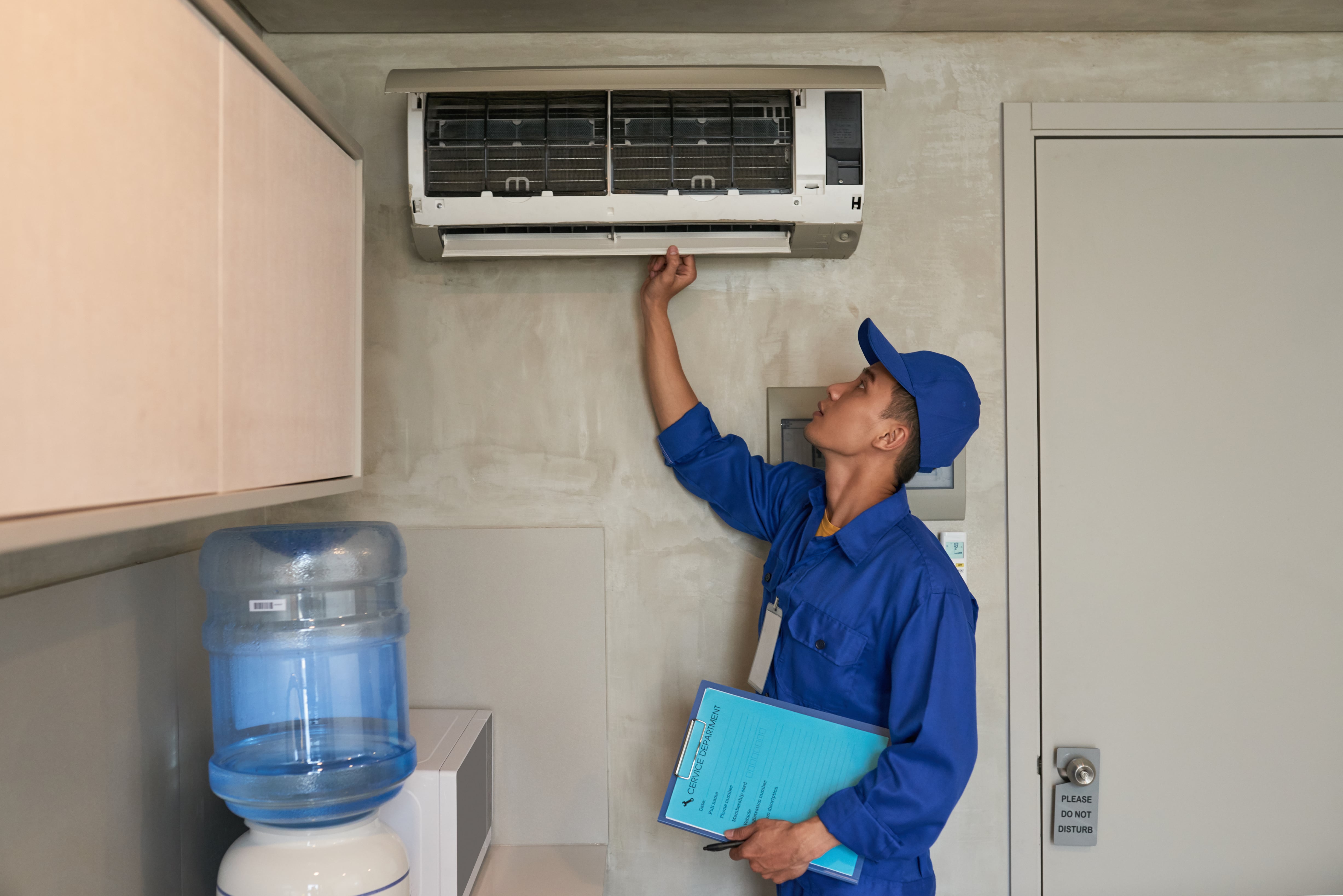
All Indianapolis homes must provide a heating unit and more and more rental homes are also equipped with air conditioning. You want to make sure these heating and cooling units are efficient, and you’ll want to have them inspected and serviced before they’re needed. This means inspecting the furnace before the cold winter months and having the air conditioning unit services before summer.
Why Your HVAC Preventative Maintenance is Essential for Weatherproofing
Your HVAC System Will Last Longer with Preventative Maintenance
Most HVAC systems can be expected to work well for 15 to 20 years. They cost thousands of dollars, so you don’t want to be replacing them every few years. With preventative maintenance and routine weatherproofing, you’ll extend the life of your heating and cooling system and maximize the time you have with it. A poorly maintained furnace or air conditioner will not survive 20 years, and you’ll be looking at expensive repairs and replacements over time.
Air Quality Is Improved Inside the Home
The “V” in HVAC stands for ventilation, and it’s often forgotten when we talk about weatherproof and preventative maintenance for your HVAC. But, tenants will appreciate the air quality inside the home when your system is working efficiently. There are tons of allergens in the air and lots of dust that enter the system, especially if there are pets in the home. All the air in your rental home passes through the furnace filter. Your service technician can make sure the filter is doing what it should; removing trapped dirt, pollen and allergens from the air inside the home.
Energy Bills Will be Lower
An inspection from a professional service technician ensures your HVAC system is working at peak efficiency. If not properly cleaned every year, your system could be losing up to 40 percent of its energy efficiency, which is going to mean higher electric bills. Properly maintaining your system is the best thing you can do to keep energy bills down, which is great if utilities are included and you’re paying for them. Point this out to your tenants when they maintain their own utility accounts so they understand the value you are providing to them with preventative HVAC maintenance.
Reliable Heat and Air All Year Long
When the Indianapolis summer heat settles in, your tenants rely on your air conditioner to keep the home comfortable. The air conditioner includes an inside and outside air unit. It’s important to clear debris from the cooling coils on the outside unit to keep the system running properly. A plugged coil is the primary reason air conditioners fail in the hot, summer months. With preventative visits from a qualified service technician, the coils will be cleaned and inspected.
Why Invest in Regular Maintenance?
Preventative Maintenance Increases Tenant Retention
We don’t know a lot of tenants who will remain in a property that doesn’t have reliable air conditioning during August or heat in December. With annual or biannual preventative service appointments, your HVAC technician will clean and inspect the entire system and test its internal components. Your tenants will enjoy a system that works well and is easily maintained. Remind them about filter changes and everyone will feel more comfortable will a well-maintained heating and cooling system.
Good Ways to Weatherproof Your Indianapolis Investment Property
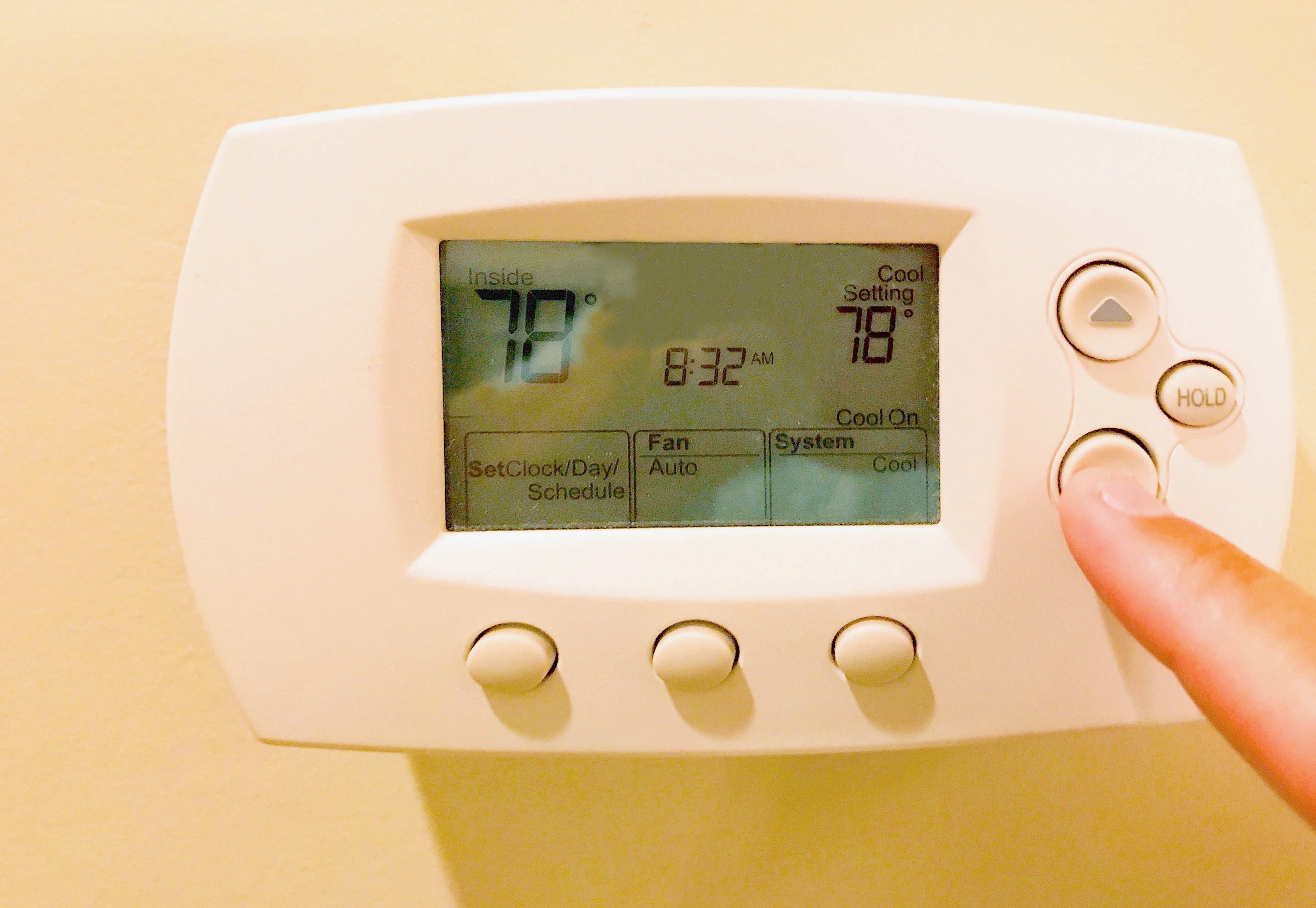
Programmable Thermostats Installing programmable thermostats can be a game-changer for controlling internal temperature and conserving energy. They allow tenants to set the temperature according to their schedule, ensuring comfort while reducing energy waste. |
Protecting Pipes Indiana's winters can be tough on plumbing. Frozen pipes are a hazard, causing inconvenience and potentially significant damage. Foam tubing can be installed around pipes to prevent freezing, and you’ll also want to ensure that all exterior faucets are drained and turned off before winter arrives. |
Efficient Water Use Whether it’s hot or cold outside, the efficiency of water use within the property is vital for utility bills and the environment. Invest in low-flow fixtures such as toilets and showerheads to reduce water consumption. Consider wrapping your water heater in a blanket for extra insulation in the winter so the water stays warmer for longer periods. |
Exterior Maintenance for Weatherproofing
Maintaining the exterior of your rental properties is just as essential as the internal measures when it comes to weatherproofing. Proper exterior maintenance not only protects the building from the elements but can also enhance its curb appeal, making it more attractive to current and prospective tenants. We have already talked about the importance of your roof inspections and repairs as well as the attention that your gutters and downspouts need. Here are some additional tips to keep in mind:
Landscaping
Proper landscaping can help control water drainage away from the property. Planting trees and shrubs at appropriate distances from the building can also provide natural windbreaks and shade, reducing heating and cooling costs.
Exterior Paint and Finishes
A well-maintained exterior paint job not only looks good but also provides a layer of protection against moisture and pests. Use paint and finishes that are suited for the local climate and designed for exterior use.
Foundation Checks
Regularly inspect the foundation for cracks and signs of water damage. Early detection and repair can prevent costly structural issues down the line.
By prioritizing these exterior maintenance tasks, rental property investors can significantly enhance the weatherproofing of their Indianapolis rental properties, ensuring they remain comfortable, efficient, and appealing year-round.
Preparing for Emergencies

Beyond the regular weatherproofing measures, it's crucial for property owners in Indianapolis to prepare their rentals for emergency situations. What if a huge snowstorm cuts power for several days? Suppose an evacuation order goes into effect because of ice.
Being proactive can significantly reduce the impact of unexpected weather events and ensure the safety and comfort of your tenants. Here are several tips for emergency preparedness:
Emergency Contact List Provide tenants with a comprehensive list of emergency contacts, including local utility companies, plumbers, electricians, and the property management contact information. | Emergency Kits Encourage tenants to keep an emergency kit on hand, which should include essentials such as water, non-perishable food, a flashlight, batteries, a first-aid kit, and blankets. |
Backup Power Solutions Consider installing backup power solutions, such as generators, to keep critical systems running during a power outage. This is particularly important for heating systems in winter and cooling systems in summer. | Tenant Education Educate tenants on how to safely shut off utilities like gas, water, and electricity in case of an emergency. Providing clear, written instructions can be very helpful. |
Property Insurance Ensure your property insurance is up-to-date and covers typical weather-related emergencies in Indianapolis. It’s also beneficial to encourage renters to get their own renter’s insurance. | Regular Communication Establish a system for regular communication with tenants, especially during weather alerts and emergencies. This could include email updates, texts, or a dedicated property app. |
By incorporating these emergency preparedness measures into your management plan, you can enhance tenant safety, minimize property damage, and ensure a quicker recovery after any disaster.
Always, the most effective weatherproofing strategy involves communication. Educate your tenants on how they can help maintain the efficiency of the property, such as using blinds and curtains effectively, managing thermostat settings, and reporting any drafts or leaks.
Weatherproofing your Indianapolis rental properties is an annual activity that smart investors will not overlook. Not only does it enhance the comfort and satisfaction of your tenants, but it also has significant long-term benefits for your property's value and operating costs.
By following these strategies that we’ve provided, you can ensure that your properties stand strong against the elements while keeping utility costs manageable.
We know it’s a lot to work with, and if any of this seems overwhelming, please consider working with an Indianapolis property management company that can ensure your property is well-maintained and safe no matter what the weather’s like. We’d love to be your local management resource. Please contact us at Red Door Property Management.








